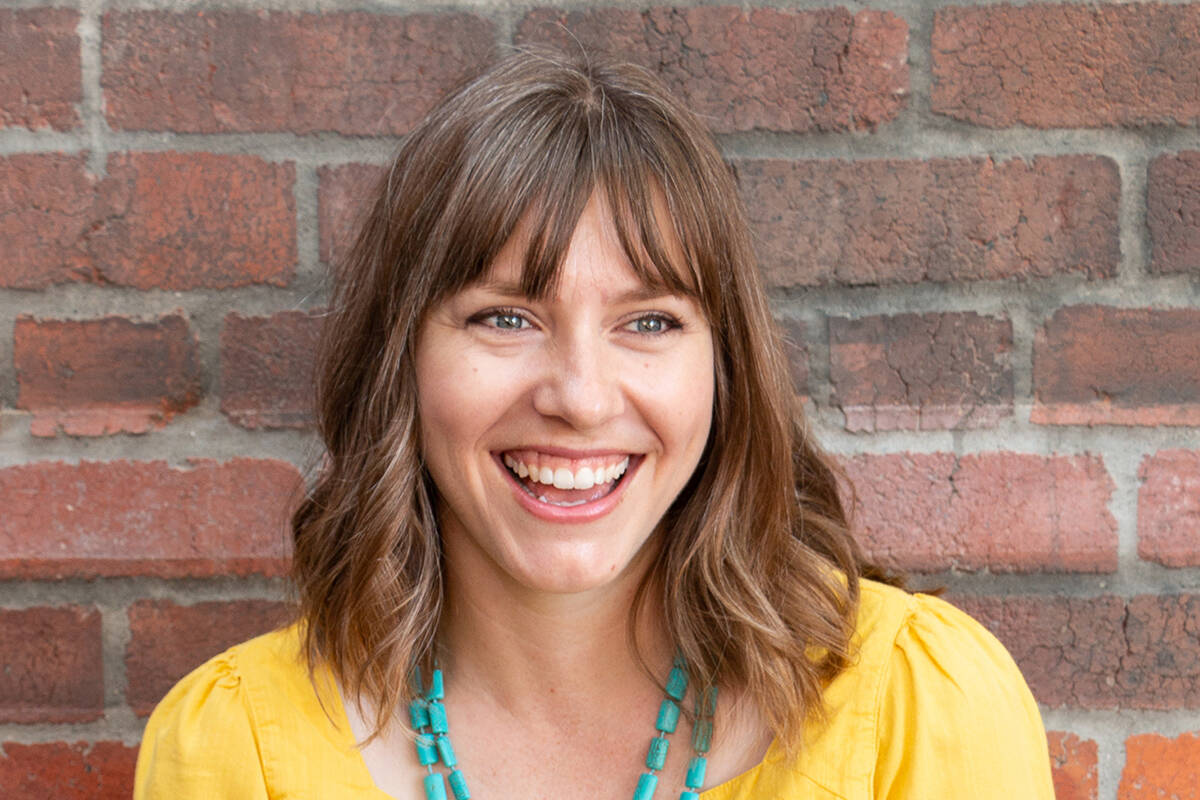UNLV graduate discusses her contributions to ‘Lightyear’

“To infinity and beyond” has a special meaning for UNLV alumna Samantha Gruwell, who graduated with a bachelor’s degree in film in 2005 and now works as a department manager in the feature film production division of Pixar Animation Studios.
Since 2011, Gruwell has been a member of the production management team at Pixar, contributing to a variety of projects. Most recently, the native of Tucson, Arizona, served as the sets and camera and staging manager for the new “Toy Story” spinoff “Lightyear,” hitting theaters this weekend.
The sci-fi action adventure that made Andy fall in love with his Buzz Lightyear toy follows the heroic Space Ranger after he’s marooned on a foreign planet 4.2 million light-years from Earth alongside his commander and their crew. Buzz (voiced by Chris Evans) must find a way back home with the help of aspiring recruits and his loyal robot cat, Sox, while they battle Zurg, a mysterious presence with a ruthless robot army.
The film also features the voices of Uzo Aduba, Peter Sohn, Keke Palmer, Taika Waititi and Dale Soules.
Review-Journal: What made you pursue film as a career?
Samantha Gruwell: Well, I think it all goes back to seeing “Toy Story” in theaters back in 1995. When I was 11, I had already been interested in art and animation as a kid just growing up with, like, “The Lion King” and “Little Mermaid” and “Aladdin” and those movies, wanting to just be around animation if I could.
Why did you choose UNLV?
This sounds funny: I had visited Las Vegas a lot as a kid growing up on family trips there. I had seen the Blue Man Group, and that was a big reason why I wanted to move to Vegas because I wanted to work for them — which ended up happening while I was in college. And, you know, just the idea of being in a town that had more going on and just more theater productions and fun stuff to do.
What drew you to Pixar?
Originally it was the fact that they were innovators at the time. They were doing something that no other place was really doing. And this was back when “Toy Story” first came out. I was like, “Oh, there’s artists and there’s people that are good with technology, and they’re coming together to make this brand-new art form, and this is so cool and different and unique, and they’re telling really great stories, and who doesn’t want to be a part of this?”
Describe your experience working on “Lightyear”?
It’s an experience unlike anything experienced yet at Pixar, in that we had to do it mostly from home. We were still like, “OK, how do we run a review? How do we look at each other’s work? How do we have team meetings in this environment?” We had to figure out a lot of stuff from scratch. It really made everybody come together in such a unique way, and we were able to participate in conversations and reviews that otherwise we wouldn’t have been able to if we were at the studio. By opening them up virtually, we could have as many people as they wanted in the conversation, so it felt much more collaborative.
Were there any challenges while working on the set of “Lightyear”?
The sets on this film were so challenging in that there was a lot of modeling that had to be done. There were a lot of sets and a lot of spaceships that we needed to model. Everything that you see on screen was modeled in some way, shape or form.
What do you keep in mind when working as the camera and staging manager?
We work very closely with the animation department and the lighting department and the effects department to really kind of make decisions together as a unit, and we spent a lot of time doing that on this film. We’re constantly thinking about how we can make this more dynamic, more interesting, more cinematic and, in this film in particular, more sci-fi.
What do you enjoy most about Buzz’s character?
He’s a character that we all know and love, he’s endearing from “Toy Story,” and so it was really fun to kind of see him take shape as a human. You know, he wears a few different outfits — he’s not just in the Buzz Lightyear Space Ranger suit — so that was fun, and then just seeing him evolve as a character.
What made working on “Lightyear” different from other projects?
It was my first time managing the camera and staging departments and being in these earlier conversations, exploring the character and the sets and how everything comes together and how the scenes take shape. That for me was really fascinating. And I fell in love with that part of the pipeline and that process, just being able to be in conversations that I wouldn’t have otherwise been in if I was in a different department.
Contact Maria Staubs at mstaubs@reviewjournal.com. Follow @MariaStaubs on Twitter.